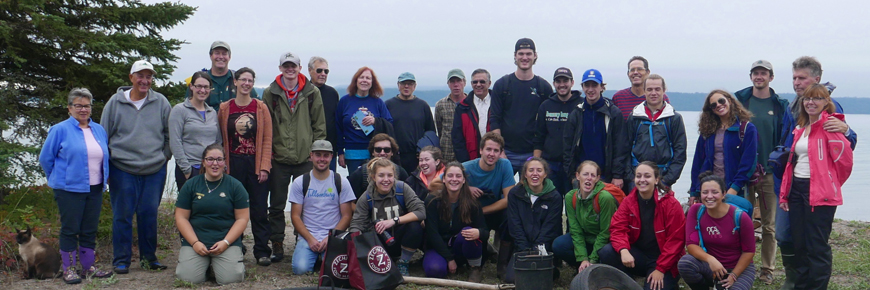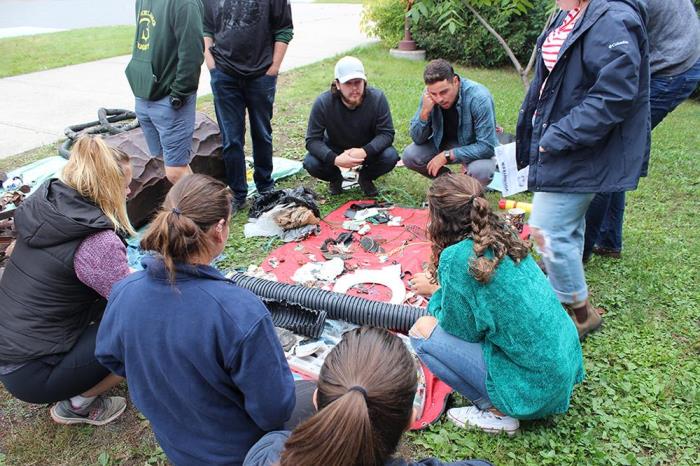
Superior coastal cleanup
Lake Superior National Marine Conservation Area
by Alexander Thompson
What do a metal oil drum, 20 feet of rubberized tubing and a water gun all have in common? How about being just a few of the varied items to be picked up from Lake Superior National Marine Conservation Area's shoreline during the International Coastal Cleanup.
Lake Superior National Marine Conservation Area (NMCA) was delighted to participate in this year’s International Coastal Cleanup (ICC) on September 16, 2017. This annual event, established by the Ocean Conservancy, helps to promote awareness and overall reduction of the Ocean Trash Index, which is the world’s largest item-by-item, location-by-location database of trash found in near-shore environments.
Lake Superior NMCA intends to be an annual participant in the coastal cleanup—this year having successfully removed over 50 pounds of garbage from 5 kilometres of shoreline over the course of just 2 hours. Some of the items collected by 37 participants ranged from small pieces of plastic and water bottles to large amounts of metal such as cans and grates.

One type of plastic contaminant that is particularly problematic are nurdles, small plastic pellets that are the raw material from which all plastic items are made. They are persistent (never break down, just get smaller), they can attract and concentrate other contaminants like PCB, and harm wildlife when ingested by birds, fish and filter feeders. Participants used shovels, brooms, sieves and other equipment to try to separate the nurdles from surrounding organic debris. Students from Lakehead University’s School of Outdoor Recreation, Parks, and Tourism took a 1-litre sample of the nurdle/organic debris mixture and counted how many nurdles were found in that sample in order to determine how many were collected. It is estimated that approximately 198,000 nurdles were cleaned up from Lake Superior during the event.
Cleanup initiatives, like the ICC, are one example of how organizations and individuals can come together to engage in environmental conservation. This year, members from the Nipigon Bay Remedial Action Plan, students from Lakehead University, and local area residents assisted with the cleanup.Parks Canada is proud to be a participant in the ICC to further protect the extraordinary natural area of the Lake Superior NMCA, which will serve as a model for ecologically sustainable use for the long-term benefit of communities along the north shore of Lake Superior and all Canadians.
Want to get involved with helping to clean up our coastal shorelines? It is a great way to help the environment and take part in a citizen science initiative! You can join next year’s International Coastal Cleanup event at the Lake Superior NMCA or find out about other cleanup events through Facebook and X. You could even organize your own coastal cleanup by contacting Parks Canada! Every little bit helps.
- Date modified :